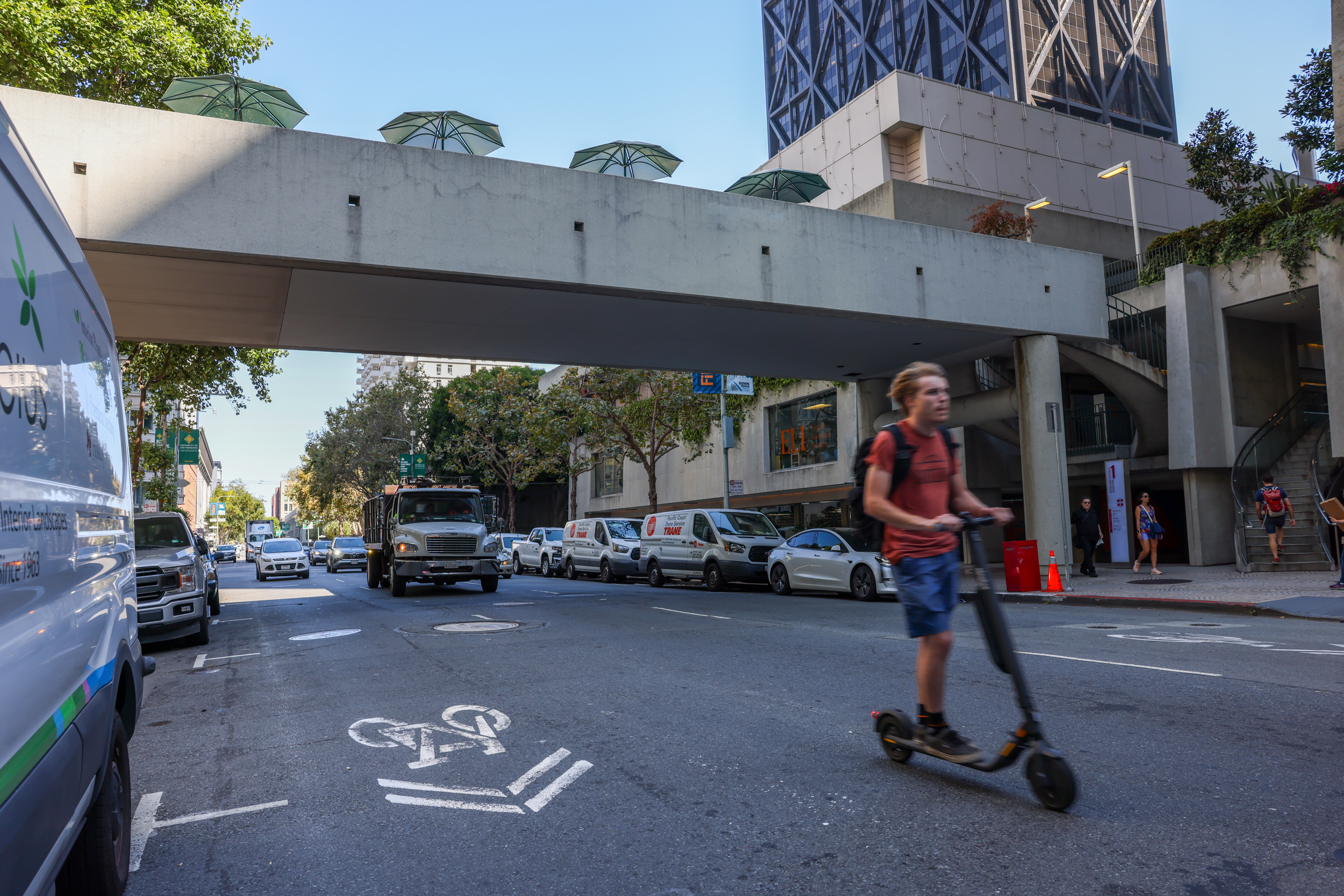Bike lanes are coming to downtown San Francisco after transit bosses green lit plans Tuesday to add a two-way bicycle path on Battery Street.
While the city says the plans should help downtown bounce back after the pandemic, some locals are not convinced.
“It’s going to be a mess,” said a California Street worker who declined to give her name and drives to work from her home in the Marina. She said that traffic is already so bad at peak hours that she is worried that reducing the number of lanes open to cars could make her commute even worse.
The plan, called the Battery/Sansome Quick Build Project, was approved by the San Francisco Municipal Transportation Authority’s Board of Directors and will add a two-way bike lane along Battery Street between Market and Vallejo streets. Those lanes will join another bike lane network created in 2019 near the Embarcadero, connecting Market Street to the waterfront by bicycle.
Jackson Place Cafe owner Alex Azucar, whose business sits on Battery Street near Jackson Street, said he believes that taking away a traffic lane will further congest the already car-clogged financial district.
“Yeah I think it’s going to make traffic worse,” he said.
But Azucar’s wife and co-owner Heather thinks the bike lane could help bring foot traffic into their cafe. “More exposure would be good for us,” she said.
Transit boss Jeffrey Tumlin took to Twitter to announce the project, saying: “We’re quick-building a two-way protected bikeway on Battery, with support of @sf_downtown, helping downtown with recovery.”
The project comes as the pandemic ravaged downtown, which used to account for most of San Francisco’s GDP, 70% of its sales tax revenue and 40% of the city’s jobs. The city is now headed for a commercial real estate collapse amid unprecedented office vacancies as companies stay remote.
Battery Street’s current layout is three one-way traffic lanes where the outer lanes are shared with bikes, bordered by street parking on either side. This would change to two one-way lanes, plus a protected bike lane south of Washington Street.
There would be a third lane where cars could park during most hours, but that would become open to traffic during peak commute hours of 7-9 a.m. and 3-6 p.m.
Construction is expected to begin in October and will take roughly four to five weeks, according to a transportation authority document on the project.
The authority said in an email that the project will allow more eco-friendly commuting options for workers when they return to downtown offices.
“As workers and visitors return to downtown San Francisco, this project will ensure that they can travel safely and sustainably,” said SFMTA spokesperson Stephen Chun.
Although the name of the project is the Battery/Sansome Quick Build Project, the authority said that the traffic lanes on Sansome will remain unchanged, and that Battery is the only street of the two getting new bike lanes.
“Improvements on Sansome street will involve daylighting, upgrading existing crosswalks to high visibility crosswalks and advanced limit lines,” said Chun. Advanced limit lines show drivers where to stop for a crosswalk.
Luke Bornheimer, an organizer at Community Spaces SF and an advocate of car-free urban transit, said he supports the bike lanes plan as the area is lacking in bike paths.
“I think it’s a good thing,” said Bornheimer. “Other than on the Embarcadero, there are no protected bike lanes in District 3.”
